Journal Contents
Crucible steel as an enlightened material
Chris Evans
Pages 79-88
Crucible steel is usually seen as a product of Sheffield. It is defined as a key element of Britain’s Industrial Revolution; in turn, it defines the Industrial Revolution as something essentially provincial and vernacular. This paper proposes a shift in perspective. It examines the alternative genealogy of crucible steel to be found in Henry Home’s Essays concerning iron and Steel (1773). Horne presented crucible steel as something metropolitan and enlightened: it was a product of London and its scientific community. It is a suggestion that runs counter to the accepted history of crucible steel as a process and a product, but there is something to be gained by taking Home’s view seriously.
Steel at the dawn of capitalism: reformation, technology and enlightenment
Paul Belford
Pages 89-99
The history of the ways of thinking which characterise the Age of Enlightenment can be traced back to late medieval humanism. The development of cementation steelmaking in early 17th century England was one of the earliest concrete expressions of an ‘enlightenment’ mode of thought. At one level there is a material connection between the products of such furnaces and the growing Enlightenment—cementation steel was used to create the weapons of the civil war, and provided insti’uments which drove forward a scientific revolution from late in the 17th century. However, at another level there is a more complex relationship between different ideas about how the world was structured. This paper will argue that the design, construction and operation of these furnaces formed a deliberately rational act at the dawn of the capitalist era: the very act of steelmaking was a bridge between humanism and the Enlightenment.
Steel in the Derwent valley: but enlightenment?
David Cranstone
Pages 100-111
The author’s 1980s excavation and research at Derwentcote are reviewed in the light of new information, and new ideas in archaeology more generally. The development of steelmaking in north-east England is seen as centered on the grafting of German and perhaps Swedish expertise on to the pre-existing English technology of cementation by William Bertram. The successfid marketing of this product as ‘German’ steel involved an element of mystique and even deception as well as genuine innovation, and Derwentcote furnace can be seen as a projection of both sides of Bertram’s character; its date may be slightly earlier than previously thought. A model of ‘technological packages’ for the development of steelmaking, with similarities to the ‘punctuated equilibria’ model of biological evolution, is briefly outlined.
The I8th-century Sheffield saw industry: its origins and relationship to crucible steel making
Simon Barley
Pages 112-126
The saw-manufacturing industry in Sheffield was of world-wide importance throughout the 19th centuiy and until its decline late in the 20th century. Its origins have been little documented in a town well-known for its cutleiy but lacking any saw industry until the 1750s. Analysis of contemporary business documents and of foreign travellers’ diaries shows that a combination of factors unique to Sheffield enabled the establishment of the industry by local entrepreneurs, at first using skilled labour imported from older centres of sawmaking in London and Birmingham. By about 1830 these centres were in steep decline, and by 1841 Sheffield contained almost 80% of the nation’s sawmakers. This paper provides quantitative data on the use of local crucible cast steel in saws and other tools, emphasising the close relationship of the saw industry with the manufacture of this early form of special steel. The changing methods of producing saw plate by forging and rolling are compared.
Steel and toy trade between England and France: The Huntsmans'correspondence with the Blakeys (1765-1769)
Liliane Pérez
Pages 127-147
Benjamin Huntsman is generally associated with the development of crucible steel. However, French archives show him in the role of merchant, exporting not only steel, both blister and crucible, but a wide range of tools and ‘toywares’to the Blakeys, merchants and forge-masters of Paris. Tools were sourced not only in Sheffield but in Birmingham and in the south-west Lancashire clockmaking district. Toywares comprised a wide range of high-quality decorative and utilitarian objects, many incorporating new high standards of decoration. The Blakey papers show contacts with other English sources, notably orders placed with the Oppenheims of Birmingham. Mrs Blakey, of French descent, and her English husband, William, show, in their surviving orders and correspondence with Benjamin Huntsman and others, a recognition of the trends in fashion of the 18th-centwy Enlightenment, which crucible steel in particular could serve.
'Deceitful Wares' - the quality control of knives by the Searchers of the Company of Cutlers in Hallamshire
Joan Unwin
Pages 148-156
In the 1624 Act of Incorporation which established the Sheffield based Company of Cutlers in Hallamshire, there was a clause stating that all blades must have an edge of steel. The Company inspected manifactured items and policed the use of cutlers’ identifying marks. Searchers were entitled to enter workshops to seek ‘deceitful wares’—blades without steel or otherwise of poor quality. Because they also monitored the registration of the cutlers’ marks, the Searchers could idenitify manufacturers. The Company’s maintenance of restrictions led to conflicts with Sheffield cutlers who wanted to respond to economic change and to developments in iron and steel manufacture in the 18th and 19th centuries. Using the records of the Cutlers’ Company, this paper traces the Company s efforts to deal with cast-iron goods and to restrict the use of trademarks which made claims over the quality of the metal in the blade

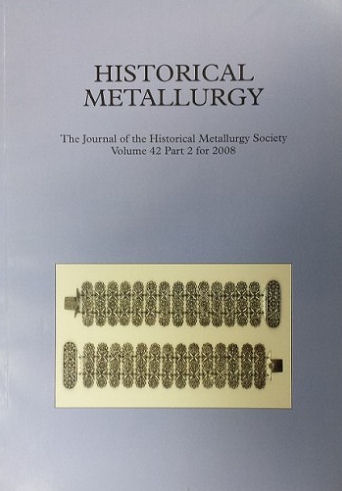
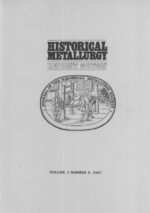
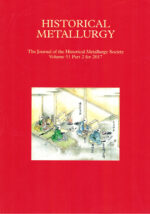
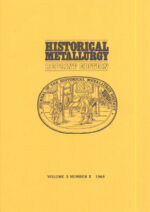
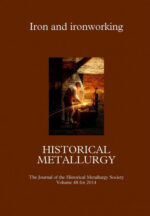
There are no reviews yet.